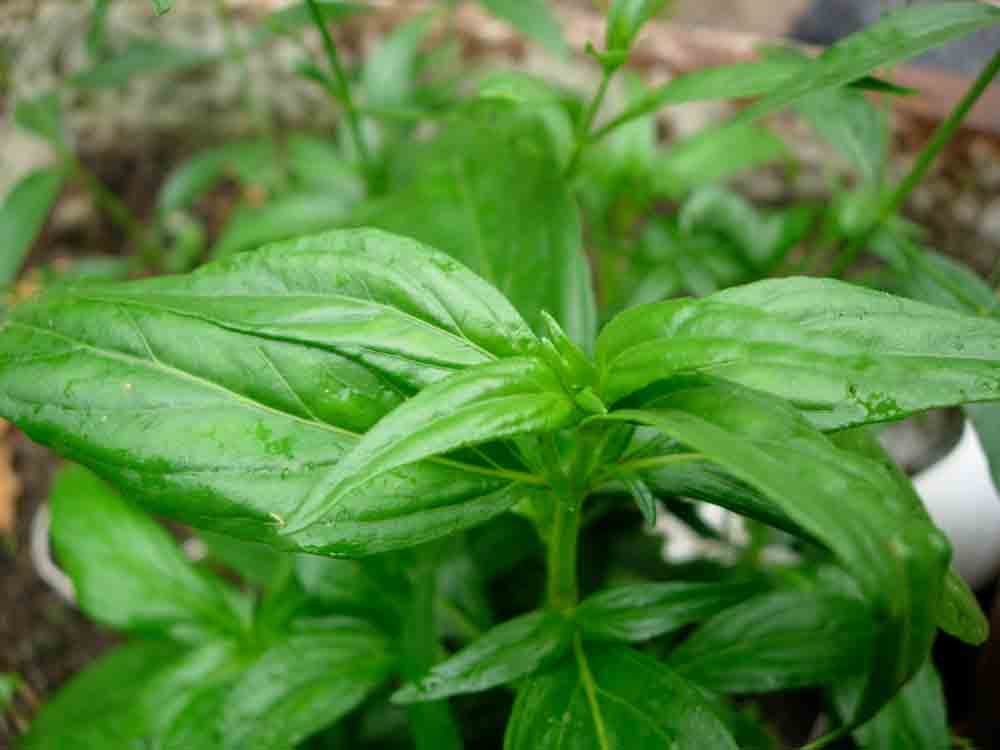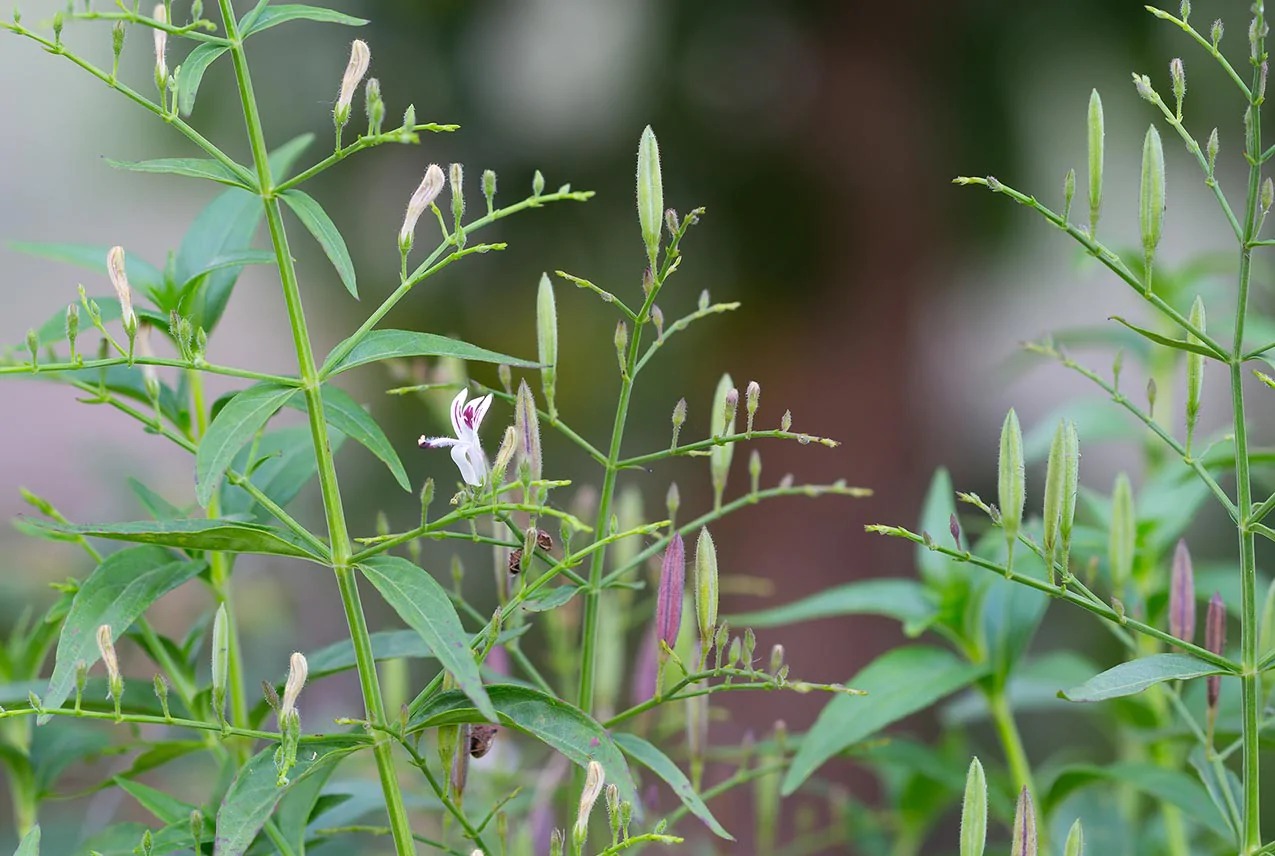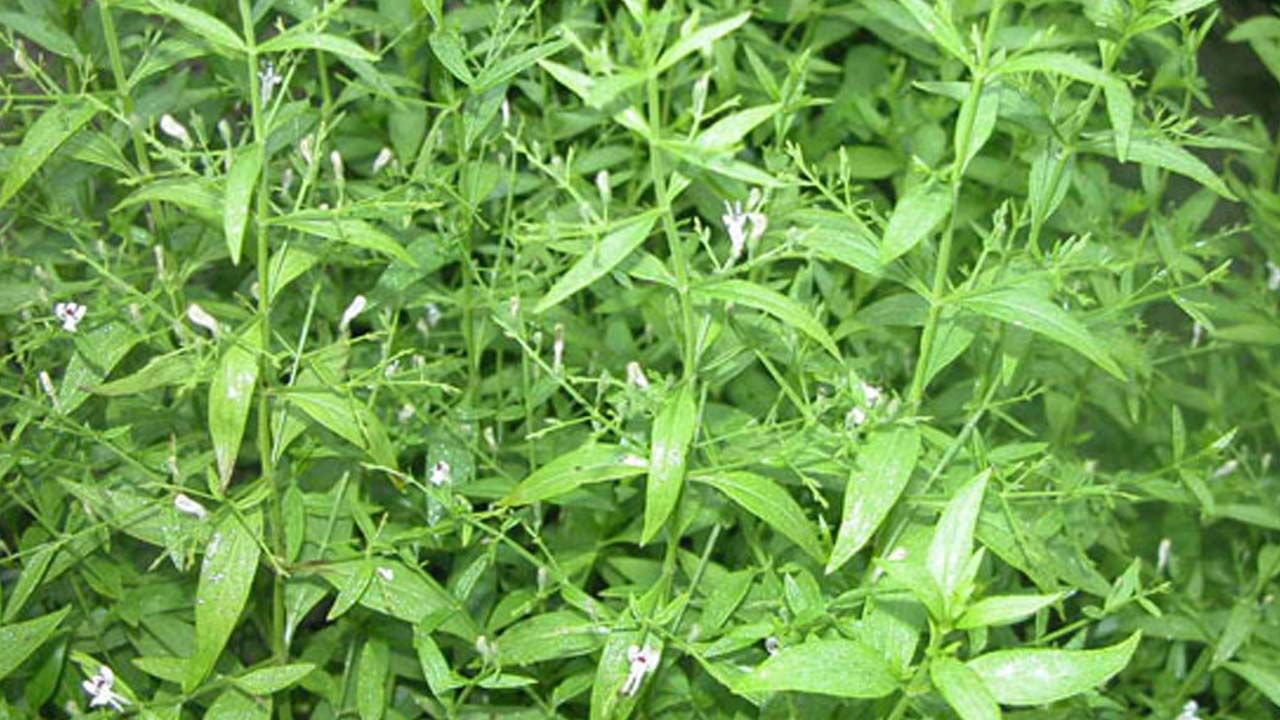
Nilavembu: A Traditional Herb with Modern Benefits
Introduction
Brief Introduction to Nilavembu (Andrographis paniculata)
Nilavembu, scientifically known as Andrographis paniculata and commonly referred to as “King of Bitters,” is a potent medicinal herb extensively used in traditional Ayurvedic and Siddha medicine. Native to South Asia, particularly India and Sri Lanka, this herb has gained recognition for its robust therapeutic properties. Nilavembu is characterized by its bitter taste and small green leaves, which are the primary parts used for medicinal purposes. The plant has been celebrated for centuries due to its impressive range of health benefits, which include antiviral, antibacterial, anti-inflammatory, and hepatoprotective effects.
Importance of Medicinal Herbs in Traditional and Modern Medicine
Medicinal herbs have played a crucial role in healthcare systems around the world for thousands of years. In traditional medicine, herbs like Nilavembu are integral due to their natural healing properties and holistic approach to health. Ayurveda and Siddha medicine, for example, have long utilized Nilavembu for treating various ailments, from fevers to liver disorders, emphasizing the body’s balance and wellness.
In modern times, there has been a resurgence of interest in medicinal herbs as complementary and alternative therapies. Scientific research has increasingly validated the traditional uses of these herbs, leading to their incorporation into contemporary medical practices. The pharmacological potential of Nilavembu, backed by clinical studies, underscores the significance of bridging traditional wisdom with modern science to enhance healthcare outcomes. This integration not only provides safer, natural alternatives to synthetic drugs but also opens avenues for new therapeutic developments.

Section 2: Historical and Cultural Significance
Traditional Uses in Ayurveda and Siddha Medicine
Nilavembu (Andrographis paniculata), also known as “King of Bitters,” holds a revered place in traditional Indian medicine systems, particularly Ayurveda and Siddha. Its bitter leaves and stems are valued for their medicinal properties, which have been harnessed for centuries.
In Ayurveda, Nilavembu is classified as “Tikta” (bitter) and “Katu” (pungent) in taste, with a cooling potency. It is believed to balance the “Pitta” (fire) and “Kapha” (earth and water) doshas, making it useful in treating conditions associated with excess heat and inflammation.
Siddha medicine, which originated in ancient Tamil Nadu, also recognizes Nilavembu for its therapeutic benefits. The plant is considered effective in purifying blood, detoxifying the body, and enhancing immunity. Siddha practitioners often prescribe Nilavembu preparations to treat fevers, respiratory infections, and liver disorders.
Historical Anecdotes and Cultural Relevance
The historical significance of Nilavembu transcends its medicinal uses, weaving into cultural narratives and traditional practices across India. References to its healing properties can be traced back to ancient texts like the “Charaka Samhita” and “Sushruta Samhita,” where it is recommended for its ability to combat infections and fevers.
Culturally, Nilavembu is celebrated during times of epidemics and seasonal illnesses. Communities in southern India have long relied on Nilavembu preparations to bolster immunity and prevent diseases during monsoon seasons. Its bitter taste symbolizes its potency in warding off illnesses, reinforcing its role as a safeguard against common ailments.
The plant’s presence in local rituals and festivals underscores its deep-rooted cultural significance. In Tamil Nadu, Nilavembu leaves are sometimes offered to deities during ceremonies seeking protection from illnesses and epidemics, highlighting its dual role as both a medicinal herb and a symbol of health and resilience.
Through centuries of use and reverence, Nilavembu continues to embody the rich tapestry of Indian traditional medicine and cultural practices, standing as a testament to the enduring wisdom of natural healing modalities.
Section 3: Phytochemical Composition
Nilavembu (Andrographis paniculata) derives its medicinal potency from a diverse array of bioactive compounds, each contributing to its therapeutic effects.
Key Bioactive Compounds
- Andrographolide: One of the primary bioactive compounds in Nilavembu, andrographolide is renowned for its potent anti-inflammatory, antioxidant, and immunomodulatory properties. It serves as a cornerstone in the plant’s medicinal profile, contributing significantly to its therapeutic benefits.
- Flavonoids: Nilavembu contains various flavonoids such as quercetin, kaempferol, and luteolin. These compounds exhibit antioxidant properties, scavenging free radicals and protecting cells from oxidative stress. They also contribute to the plant’s anti-inflammatory and antimicrobial actions.
- Diterpenoids: Compounds like neoandrographolide and dehydroandrographolide are diterpenoids found in Nilavembu. They possess hepatoprotective properties, aiding in the protection and regeneration of liver cells.
- Xanthones: Although present in smaller quantities, xanthones in Nilavembu contribute to its antimicrobial and anti-inflammatory activities.
Overview of Chemical Properties
The chemical properties of Nilavembu’s bioactive compounds synergistically contribute to its medicinal effects:
- Anti-inflammatory: Andrographolide and flavonoids inhibit inflammatory pathways, reducing inflammation associated with conditions like arthritis, respiratory infections, and gastrointestinal disorders.
- Antioxidant: Flavonoids and other phenolic compounds scavenge free radicals, protecting cells from oxidative damage and supporting overall cellular health.
- Immunomodulatory: Andrographolide enhances immune function by stimulating macrophage activity and promoting the production of immune-regulating cytokines, thereby aiding in the body’s defense against infections.
- Antimicrobial: Various compounds in Nilavembu exhibit antimicrobial activity against a wide range of bacteria, viruses, and fungi, making it effective in treating infections.
Understanding the phytochemical composition of Nilavembu underscores its therapeutic versatility and validates its traditional use in combating various ailments. These bioactive compounds not only highlight its potential in modern medicine but also reinforce its status as a valuable herb in traditional healing practices.
Section 4: Medicinal Properties
- Antiviral and Antibacterial Properties
- Mechanism of Action: Nilavembu exhibits antiviral activity by inhibiting viral replication and attachment to host cells. Its antibacterial properties are attributed to compounds like andrographolide, which disrupt bacterial cell membranes and inhibit bacterial growth.
- Evidence: Studies have shown Nilavembu’s effectiveness against various viruses and bacteria, supporting its traditional use in treating infections. (References: Ayur Times, Netmeds, Wildturmeric)
- Anti-inflammatory and Analgesic Properties
- Nilavembu is valued for its ability to reduce inflammation and alleviate pain, making it beneficial in conditions such as arthritis and fevers.
- It acts by inhibiting pro-inflammatory cytokines and enzymes, thereby reducing inflammatory responses and providing analgesic effects. (References: Netmeds, Wildturmeric)
- Hepatoprotective Effects
- Nilavembu offers significant benefits for liver health, particularly in the treatment of liver disorders like jaundice and fatty liver disease.
- Its hepatoprotective properties are attributed to compounds that enhance liver function, promote detoxification, and reduce oxidative stress. (References: Ayur Times, Moolihai.com)
- Digestive Health
- Nilavembu supports digestive health by improving digestion and treating gastrointestinal issues such as ulcers and gastritis.
- It helps by stimulating digestive enzymes, reducing inflammation in the gastrointestinal tract, and protecting against gastric ulcers. (Reference: Moolihai.com)
- Immunity Booster
- Nilavembu enhances immune response by stimulating immune cells and modulating immune pathways.
- Traditional and modern studies highlight its role in boosting immunity and defending against infections. (Reference: Wildturmeric)
- Cardioprotective Effects
- Nilavembu has a positive impact on heart health, potentially preventing cardiovascular diseases.
- It may reduce cholesterol levels, improve blood circulation, and protect against heart damage. (Reference: Moolihai.com)
- Diabetes Management
- Nilavembu exhibits hypoglycemic properties that help regulate blood sugar levels.
- Caution is advised in diabetic patients, as it may interact with diabetes medications. Guidelines recommend monitoring blood glucose levels closely. (Reference: Wildturmeric)
- Respiratory Health
- Nilavembu is effective in treating respiratory issues such as cough, cold, and bronchitis.
- Its anti-inflammatory and antibiotic properties help alleviate respiratory symptoms and combat infections. (Reference: Moolihai.com)
- Skin Health
- Nilavembu is applied topically to treat skin disorders like scabies and boils.
- Its antimicrobial and anti-inflammatory effects promote healing and relieve skin irritation. (Reference: Moolihai.com)
Toothache cure by smoking it through the ear
The practice of using Nilavembu (Andrographis paniculata) for treating a toothache by smoking it through the ear is a traditional and less documented method. Here’s a step-by-step outline based on traditional remedies, but please proceed with caution and consider consulting a healthcare professional:
Materials Needed
- Dried Nilavembu leaves or Nilavembu powder
- A small funnel or tube
- A heat source (like a candle or lighter)
- A safe, ventilated area
Steps to Follow
- Preparation:
- Obtain dried Nilavembu leaves and grind them into a fine powder if not using pre-made Nilavembu powder.
- Alternatively, use dried Nilavembu leaves directly.
- Setup:
- Place a small amount of the Nilavembu powder or leaves in a heat-resistant container or smoking apparatus.
- Smoking Procedure:
- Light the Nilavembu powder or leaves to produce smoke.
- Use a funnel or tube to direct the smoke towards the ear canal.
- Carefully position the funnel’s narrow end in your ear, ensuring it is not inserted too deeply.
- Allow the smoke to gently enter the ear canal. Breathe normally and avoid inhaling deeply to prevent irritation.
- Duration:
- Allow the smoke to enter the ear for a few minutes.
- Repeat the process for the other ear if necessary.
Precautions
- Health Risks: Smoking through the ear is unconventional and can cause irritation or other complications.
- Consultation: Consult a healthcare professional before trying this method, especially if you have existing ear conditions.
- Safety: Ensure the area is well-ventilated to avoid inhaling excessive smoke. Perform the procedure carefully to avoid burns or injuries.
Understanding Nilavembu’s diverse medicinal properties underscores its holistic therapeutic potential across various health conditions, bridging traditional wisdom with modern scientific validation.

Section 5: Traditional Uses and Preparations
- Nilavembu Kashayam (Decoction)
- Recipe and Preparation: To prepare Nilavembu Kashayam, boil finely chopped Nilavembu leaves and stems in water until the volume reduces by half. Strain and consume warm.
- Uses and Benefits: Nilavembu Kashayam is traditionally used to boost immunity, treat fevers, and alleviate symptoms of viral infections. It also supports respiratory health and aids in detoxification. (References: Netmeds, Wildturmeric)
- Topical Application for Skin Diseases
- Preparation: Crush fresh Nilavembu leaves to extract juice. Apply the juice directly to affected skin areas.
- Application Method and Benefits: Topical application of Nilavembu juice helps in treating skin disorders such as scabies and boils. Its antimicrobial and anti-inflammatory properties soothe irritation and promote healing. (Reference: Moolihai.com)
- Nilavembu Juice for Liver Disorders
- Preparation and Dosage: Extract juice from Nilavembu leaves. Consume a specified amount daily, as recommended by traditional sources, to support liver function and treat liver disorders like jaundice and fatty liver disease. (Reference: Netmeds)
- Mouthwash for Oral Health
- Preparation: Prepare a decoction of Nilavembu leaves and stems. Use it as a mouthwash after cooling.
- Benefits: Nilavembu mouthwash is beneficial for maintaining oral hygiene, reducing toothache, and promoting gum health. Its antimicrobial properties help combat oral infections. (References: Ayur Times, Moolihai.com)
- Internal Use for Digestive Health
- Preparation and Consumption: Nilavembu powder is prepared from dried leaves and taken internally. It can be consumed with water or honey.
- Benefits: It aids digestion, relieves gastrointestinal discomfort, and helps manage conditions like ulcers and gastritis. (Reference: Moolihai.com)
- Anti-diabetic Use
- Preparation of Decoction: Prepare Nilavembu decoction by boiling the leaves. Consume it regularly under supervision to help manage blood sugar levels.
- Guidelines for Safe Use: While beneficial for diabetes management, caution is advised in monitoring blood glucose levels and consulting healthcare providers, especially when using Nilavembu alongside diabetes medications. (Reference: Wildturmeric)
These traditional preparations and uses highlight Nilavembu’s versatility in promoting holistic health through various applications, integrating ancient wisdom with practical health benefits.

Section 6: Modern Applications and Research
Overview of Contemporary Research on Nilavembu
Nilavembu (Andrographis paniculata) has garnered significant attention in modern scientific research, validating its traditional uses and exploring new applications in healthcare.
- Antiviral and Antibacterial Properties: Recent studies have confirmed Nilavembu’s efficacy against a range of viruses and bacteria, highlighting its potential as a natural alternative for combating infections.
- Anti-inflammatory and Immunomodulatory Effects: Research indicates that Nilavembu exhibits potent anti-inflammatory effects by inhibiting pro-inflammatory cytokines and modulating immune responses. These properties make it valuable in managing inflammatory conditions and enhancing overall immunity.
- Liver Protection: Studies support Nilavembu’s hepatoprotective properties, suggesting its role in treating liver disorders and promoting liver health by reducing oxidative stress and enhancing detoxification processes.
- Cardiovascular Health: Preliminary research suggests that Nilavembu may contribute to cardiovascular health by lowering cholesterol levels, improving blood circulation, and protecting against heart damage.
Integration of Nilavembu in Modern Medicine and Supplements
In recent years, Nilavembu has been increasingly integrated into modern medicine and dietary supplements due to its potent bioactive compounds and therapeutic versatility:
- Pharmaceutical Formulations: Pharmaceutical companies are exploring Nilavembu extracts and formulations for their antiviral, anti-inflammatory, and hepatoprotective properties, aiming to develop novel treatments for infectious diseases, inflammatory disorders, and liver conditions.
- Nutraceuticals and Dietary Supplements: Nilavembu supplements are gaining popularity as immune boosters and general health supplements. They are marketed for their antioxidant benefits, immune support, and potential in managing chronic conditions like diabetes and cardiovascular diseases.
- Clinical Trials: Ongoing clinical trials continue to investigate Nilavembu’s efficacy and safety profiles across various health conditions, providing scientific evidence to support its traditional uses and explore new therapeutic avenues.
As modern research advances, Nilavembu holds promise as a valuable botanical resource in both preventive and therapeutic healthcare practices, bridging traditional knowledge with contemporary scientific validation.

Section 7: Safety and Precautions
Nilavembu (Andrographis paniculata) is generally considered safe when used appropriately, but like any herbal remedy, it requires awareness of potential side effects, contraindications, and guidelines for safe usage.
Potential Side Effects and Contraindications
- Gastrointestinal Disturbances: Some individuals may experience mild gastrointestinal discomfort, such as nausea, diarrhea, or abdominal pain, especially when consuming higher doses or concentrated extracts of Nilavembu.
- Allergic Reactions: Allergic reactions to Nilavembu, though rare, may occur in sensitive individuals. Symptoms can include itching, rash, or swelling. Those allergic to plants in the Acanthaceae family should exercise caution.
- Pregnancy and Lactation: The safety of Nilavembu during pregnancy and breastfeeding has not been sufficiently studied. It is generally recommended to avoid use during these periods unless directed by a healthcare provider.
- Autoimmune Disorders: Due to its immunomodulatory effects, Nilavembu may theoretically interact with medications or exacerbate symptoms in individuals with autoimmune conditions. Consultation with a healthcare provider is advised.
Guidelines for Safe Usage
- Dosage: Follow recommended dosages as per traditional practices or healthcare provider guidance. Excessive consumption can lead to adverse effects.
- Preparation: Ensure Nilavembu preparations are made from reputable sources and follow proper extraction methods to avoid contamination.
- Duration of Use: Long-term use of Nilavembu should be monitored, especially when used for chronic conditions. Periodic breaks may be recommended to assess tolerance and efficacy.
Importance of Medical Supervision for Specific Conditions
- Diabetes: Nilavembu’s hypoglycemic effects may interact with diabetes medications, necessitating close monitoring of blood glucose levels and adjustment of medication doses as needed.
- Liver Disorders: While beneficial for liver health, Nilavembu should be used under medical supervision, especially in cases of severe liver disease or ongoing liver treatments.
- Immunocompromised Individuals: Individuals with compromised immune systems should consult healthcare providers before using Nilavembu due to its potential immunomodulatory effects.
- Children and Elderly: Special caution is advised when administering Nilavembu to children or elderly individuals, adjusting dosage and frequency based on individual health profiles.
Understanding these safety considerations ensures that Nilavembu is used effectively and responsibly, minimizing risks and maximizing its therapeutic benefits in diverse healthcare contexts. Regular communication with healthcare providers is essential, especially when integrating herbal remedies into treatment plans for specific health conditions.

Conclusion
Nilavembu (Andrographis paniculata) stands as a remarkable botanical remedy deeply rooted in traditional Indian medicine, offering a wealth of therapeutic benefits supported by both ancient wisdom and modern research.
Summary of Benefits and Uses
Nilavembu is valued for its:
- Antiviral and Antibacterial Properties: Effective against a range of infections.
- Anti-inflammatory and Analgesic Effects: Alleviates inflammation and pain.
- Hepatoprotective Benefits: Supports liver health and treats liver disorders.
- Digestive Aid: Improves digestion and manages gastrointestinal issues.
- Immune Booster: Enhances immune function and defends against illnesses.
- Cardioprotective Effects: Promotes heart health and prevents cardiovascular diseases.
- Diabetes Management: Helps regulate blood sugar levels, with caution in diabetic patients.
- Respiratory Support: Treats respiratory conditions like cough and bronchitis.
- Skin Care: Treats skin disorders and promotes skin health.
Integration of Traditional Wisdom with Modern Practices
By embracing Nilavembu’s holistic benefits, we bridge the gap between traditional knowledge and modern healthcare. Integrating this botanical into health practices underscores its role in promoting wellness and managing various health conditions effectively.
Supporting organizations like the MEDA Foundation, dedicated to promoting herbal medicine research and education, ensures continued exploration and utilization of plants like Nilavembu for global health benefits.
References
- The Encyclopedia of Medicinal Plants by Andrew Chevallier
- Indian Medicinal Plants: An Illustrated Dictionary by C.P. Khare









